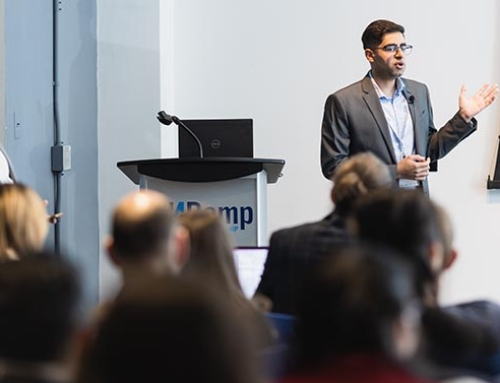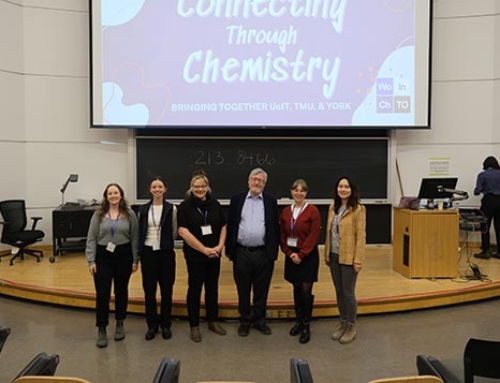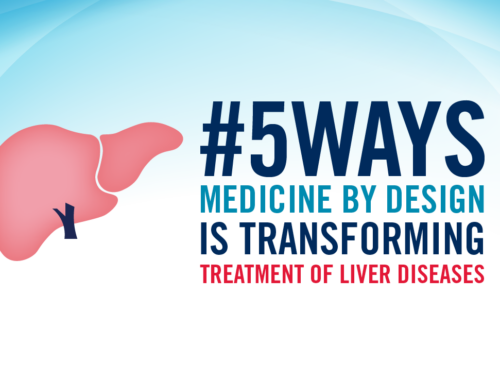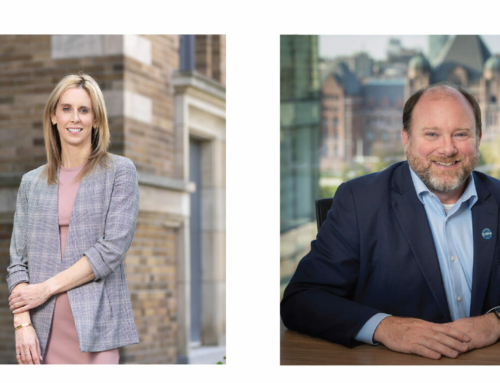
High school students explore the challenges of isolating stem cells from larger populations of cells under the guidance of Phillip Weeber (seated), a student in the laboratory of Professor Shana Kelley at U of T’s Leslie Dan Faculty of Pharmacy. (Photo by Ann Perry)
Dipping a metal rod into an inflatable kiddie pool filled with multi-coloured plastic balls may not look like the frontiers of medical research.
But the activity, which was designed to show the challenge of isolating relatively rare stem cells — in this case, a handful of balls with magnetic strips — from a much larger pool of cells, had a serious purpose: to introduce more than 100 students and their teachers from 12 high schools across the Toronto area to regenerative medicine.
The display from the laboratory of Shana Kelley, a professor at the Leslie Dan Faculty of Pharmacy, was part of Regenerative Medicine: The Next Frontier, a conference co-hosted on Nov. 2 by Medicine by Design and University of Toronto Schools. In addition to interactive booths highlighting research funded by Medicine by Design, the event also featured talks by researchers from the University of Toronto and its affiliated hospitals, along with guest speakers from CCRM, BlueRock Therapeutics and Blueline Bioscience, on subjects ranging from what regenerative medicine is to the process of translating discoveries into better treatments for diseases such as heart failure, stroke and diabetes.
Clare Fiala, a Grade 12 student at University of Toronto Schools, said it was exciting to see that Toronto is “on the cutting edge of the cutting-edge topic of stem cell research.”
“It was really inspirational to hear about the breakthroughs that are happening literally a 10-minute subway ride away from us, and to be a little part of it was really amazing,” said Fiala, a member of the conference organizing committee who plans to pursue a career in medicine.
Stem cells are special cells in our bodies that have the capacity to self-renew and differentiate into any other cell type. As the building blocks of our tissues and organs, they are central to regenerative medicine, which seeks through a variety of tools and approaches to treat disease by replacing, regenerating or repairing damaged tissue. The University of Toronto’s Medicine by Design initiative builds on decades of discoveries in regenerative medicine at the university and its affiliated hospitals, beginning with the discovery of stem cells by James Till and Ernest McCulloch in the early 1960s, to generate new peaks of excellence in the field.
Payam Zahedi, Medicine by Design’s scientific manager, said the aim of the conference was to showcase to high school students Toronto’s strengths in regenerative medicine and the breadth of opportunities it offers.
“These students are starting to make decisions about the next steps in their education,” said Zahedi, who co-led the conference with Nika Shakiba, a post-doctoral fellow at the Institute of Biomaterials & Biomedical Engineering. “We want them to know that regenerative medicine is a dynamic and growing field that needs people who are passionate about science, engineering, medicine, business and philosophy. And Toronto is one of the best places in the world to pursue it.”
Regenerative Medicine: The Next Frontier – November 2, 2017
At the conference, students participated in a debate about the ethics of human-pig chimeras, hybrid organisms that could eventually increase the supply of human organs available for transplant by enabling scientists to grow them inside animals. They also heard about a range of jobs available in regenerative medicine, including in research, regulatory affairs, venture capital, manufacturing and communications.
Matthew Lynn, a Grade 12 student at Michael Power/St. Joseph High School in Etobicoke, said the conference introduced him to the diverse paths he could take in regenerative medicine.
“It’s great to know about these new, emerging career opportunities and really take advantage of that,” said Lynn, who plans to study life sciences at university.
Dr. María Niño-Soto, who teaches biology and Spanish at University of Toronto Schools, said teachers have opportunities to incorporate regenerative medicine topics into Grade 10 science and Grade 11 and 12 biology classes. Niño-Soto, who helped organize the conference, said she hoped it had “opened students’ eyes to possibilities they may not have considered in terms of what they are going to do in the future.”
Medicine by Design harnesses the extraordinary expertise at the University of Toronto and its affiliated hospitals at the convergence of physical and life sciences, engineering, mathematics and medicine to undertake transformative research in regenerative medicine and cell therapy. It is made possible in part thanks to a grant from the Canada First Research Excellence Fund.
















